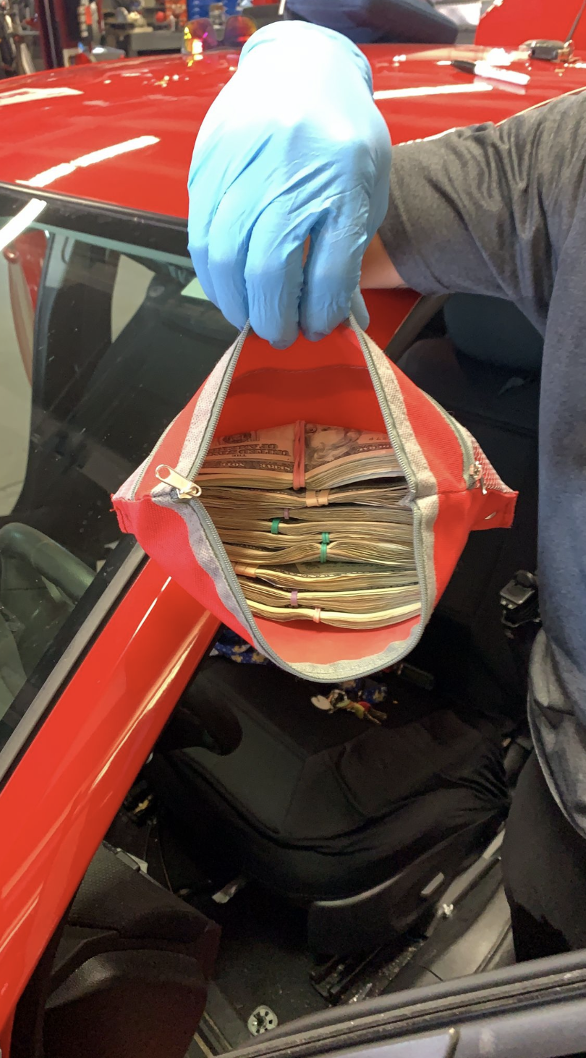BROWN COUNTY (NBC 26) — Although law enforcement said the COVID-19 pandemic impacted the movement of drugs across the country in 2020, Brown County officials are seeing methamphetamine come back in full force this year as other new concerning trends emerge.
Lt. Matthew Ronk, Brown County Drug Task Force, said methamphetamine is becoming "the greatest threat to the Brown County community."

The Brown County Drug Task Force seized 33,629 grams of meth in 2019, the highest amount to date. That number decreased 95% in 2020 at the height of the pandemic when U.S. borders closed. Ronk said not as many drugs entered the country or Northeast Wisconsin at that time.
But numbers increased nearly six times that so far this year, shooting up to 8,884 grams seized as of Sept. 27. Ronk said the task force seized more grams of meth in May than they did in all of 2020.
"We've seen an explosion of methamphetamine. The numbers don't lie," Ronk said. "We're three-quarters of the way through the year. We're not going to set a record. We had a substantial seizure a few years ago, but we're seeing more meth than ever coming into the community."


Meanwhile, Brown County health and law enforcement officials are noticing an emerging health concern: the rise of fentanyl.
In 2020, the Brown County Drug Task Force seized just over 767 grams of opioids: Roughly 66% was heroin.
Those numbers are reversed in 2021: So far this year the task force seized about 269 grams of opioids with 67% being fentanyl.
Fentanyl is 50 to 100 times more potent than morphine, according to the National Institute on Drug Abuse. While the opioid seizures appear to be down this year, Ronk said what they're finding is more potent and far more deadly. In many cases, Ronk said people intend to buy heroin and end up with fentanyl instead.
"We've had seizures of upwards of a half kilo of strictly fentanyl," Ronk said. "It's incredibly concerning because a user might use the same amount that they typically use thinking it's heroin, ends up being fentanyl, and then they overdose and die."
Andrew Cohen, Bellin Health pharmacist, said fentanyl can be roughly 20 times more potent than heroin. He said one spec of super fentanyl would be enough to tranquilize an elephant.
"The hallmark of any addiction; you always are looking for something to get you more and more high," Cohen said. "What we've seen with those numbers switching, is that over time as individuals have been utilizing heroin, for example, there has been a need to constantly look for something stronger. One of those ways the drug trade can introduce stronger medications is to introduce fentanyl into the supply."
Cohen said reversal agents like narcan don't work as well on strong doses of fentanyl.
He said Bellin Health has seen an increase in the number of drug overdoses this year. Cohen said data shows Bellin Health had no overdoses in the emergency department in November 2020. There were 15 overdoses in June and July of this year alone.
"It is quite concerning when you see overdoses rise in a region," Cohen said. "We already have one existing pandemic that's going on that has this big attention, but we also have to remember that this is still a public health emergency, that the opioid epidemic is still happening, and that it can be exacerbated by all the challenges and all the pressures of one pandemic into another."
Some health departments offer fentanyl test strips to check if a heroin supply is contaminated with fentanyl.
People can call the Brown County Sheriff's Office for drug tips at 920-448-4230.
Individuals or families seeking help with substance abuse can call SAMHSA’s National Helpline at 1-800-662-4357.




